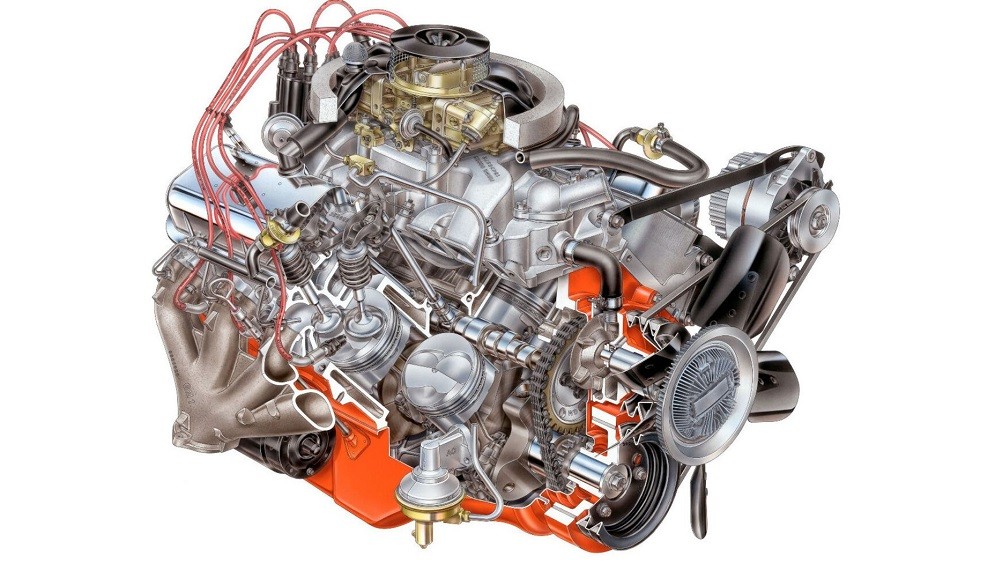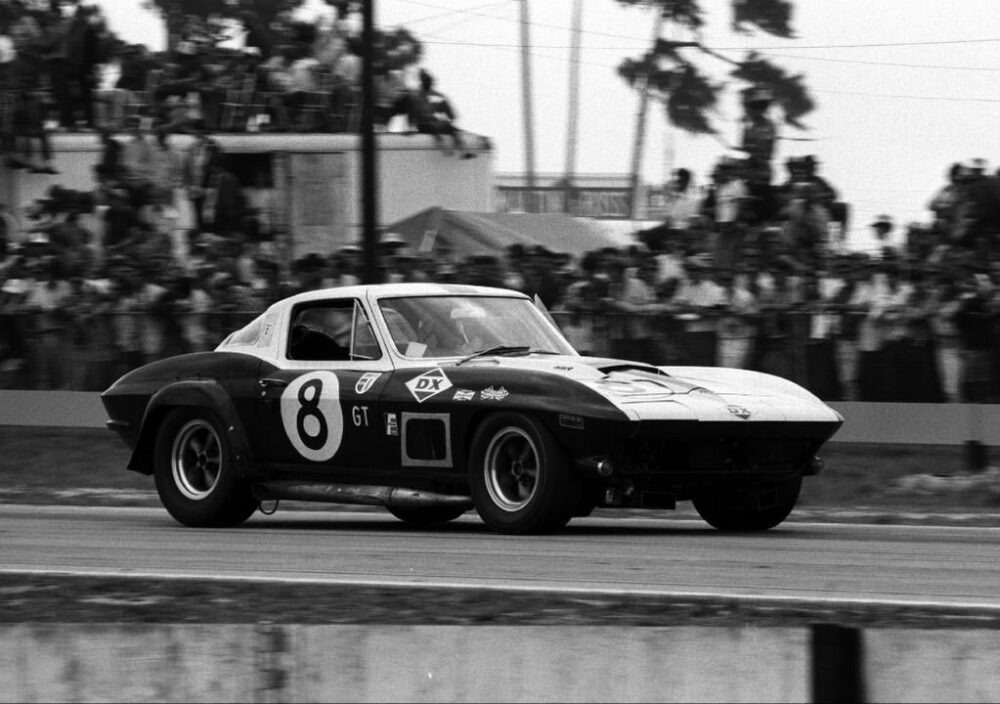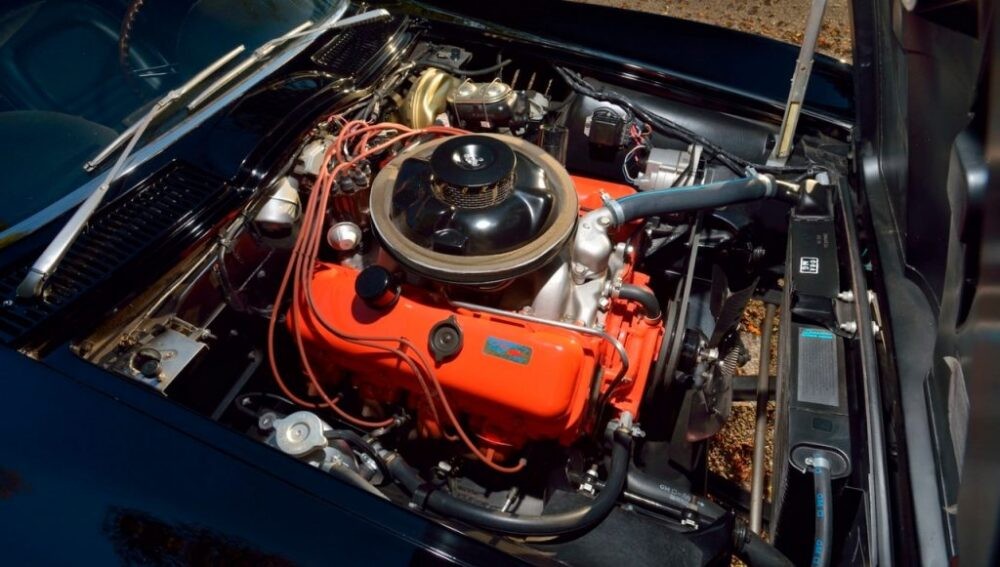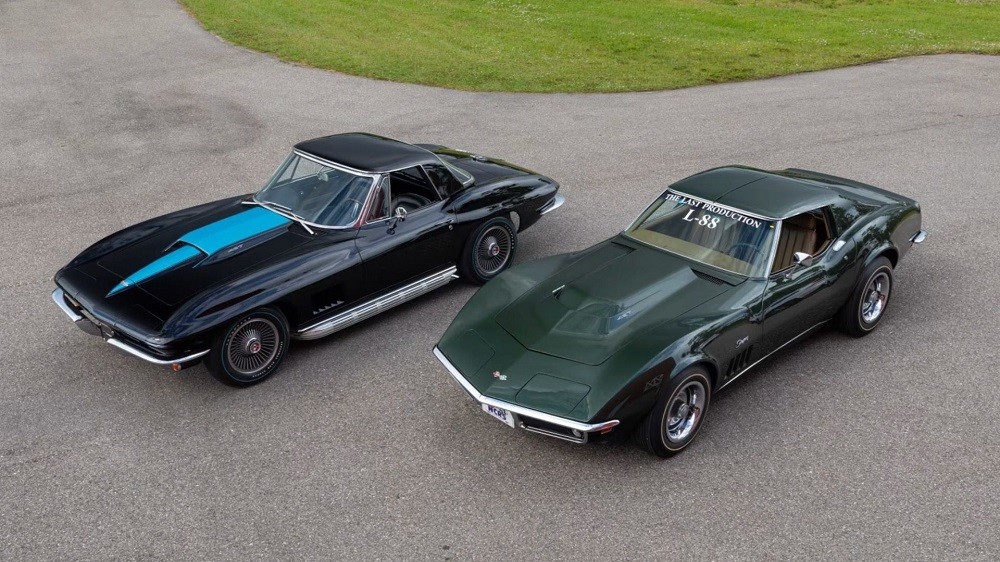The Corvette, right from its inception, has been synonymous with exhilarating speed and performance. This reputation is deeply rooted in its powerful V8 engines, the heart and soul of nearly every model. Among these legendary powerplants, the L88 427 stands out as an icon, an engine that blurred the lines between street car and race car. Let’s delve into the history and mystique of this remarkable big block Chevy engine.
First, the essentials. The L88 is a 427 cubic inch engine that graced Corvettes from 1967 to 1969. Production numbers were deliberately kept low, with only 20 units in 1967, 80 in 1968, and 118 in 1969, totaling a mere 218 Corvette L88s. Officially, the 1967 L88 was rated at 430 horsepower at 5200 RPM and 460 lb/ft of torque at 4,000 RPM. However, these figures were widely considered to be significantly understated. The engine’s high 12.5:1 compression ratio demanded high-octane 103-rated fuel and it shared the robust iron four-bolt main block with other 427s. Visually, the L88 engine appeared deceptively similar to other big block Corvette engines, with no external badges to announce its special status. Chevrolet intentionally downplayed the L88, wanting to keep it under the radar, which only added to its legendary status.
 The L88 427: A History of GM
The L88 427: A History of GM
But beneath the surface, the L88 was far from ordinary. It was arguably the closest thing to a full-fledged racing engine available in a production vehicle from GM, or any manufacturer for that matter. It utilized the already potent 427 as a foundation to create a truly extraordinary powerplant. Here’s how they achieved this feat of engineering.
The Racing Lineage of the Corvette 427 L88
 The L88 427: A History of GM
The L88 427: A History of GM
The driving force behind the Corvette’s performance revolution was Zora Arkus-Duntov, a pivotal figure in Corvette history. Duntov, a passionate racer, skillfully navigated the factory motorsports ban of 1957 by shifting support from teams to individual drivers. This era of clandestine factory support fueled the development of Corvettes that pushed the boundaries of “streetable.” As the automotive horsepower wars of the 1960s escalated with rivals like the Shelby GT350 and Hemi-powered Barracudas, Duntov’s masterpiece for a production car emerged: the L88. It was, without question, the most potent Corvette engine of its time, available to the public in limited numbers.
The Corvette 427 L88 immediately demonstrated its racing prowess. Don Yenko secured the very first L88 Corvette for his Sunray DX team. In its debut at the 1967 12 Hours of Sebring, it achieved a remarkable 10th overall and first in class finish. This car embodied lessons learned from the Grand Sport program, itself conceived to challenge the Shelby Cobra, translating those racing innovations into a “street” machine. To underscore its racing intent, features like power steering, air conditioning, a radio, carburetor choke, radiator fan shroud, and even a defroster were omitted. Instead, buyers received a robust M22 “rock crusher” four-speed transmission, a Positraction differential, power-assisted brakes, and a comprehensive heavy-duty running gear package. Essentially, purchasing an L88 Corvette was akin to acquiring a race car, minus the racing livery. This performance came at a premium, with the L88 option adding approximately $1,700, a substantial 30% increase to the base Corvette price.
 The L88 427: A History of GM
The L88 427: A History of GM
The Corvette L88 engine went on to compete globally, achieving impressive lap times and milestones. Notably, it marked the C2 Corvette’s sole entry at the prestigious 24 Hours of Le Mans, reaching a blistering 171.5 mph on the Mulsanne Straight before mechanical issues forced retirement. L88 Corvettes also participated in SCCA events, further endurance races, and another Le Mans attempt in 1968. Its motorsport successes fueled demand within the racing community, leading to a sixfold increase in production for its final year.
The Enduring Legacy of the Corvette L88
 The L88 427: A History of GM
The L88 427: A History of GM
The L88 engine cemented its place among the pantheon of legendary 1960s racing engines, alongside rivals like the Chrysler Race Hemi and Ford 427 SOHC. Even today, its performance remains undeniably potent. The factory rating of 430 horsepower was notoriously conservative. Contemporary estimates placed the actual output closer to 540-550 horsepower. A rebuild by Hemmings demonstrated even higher figures, reaching 574.4 horsepower at 5900 RPM, confirming the engine’s true potential. While its appearance might be understated for a big block, its performance figures speak volumes. Combined with the Corvette’s lightweight and finely tuned chassis, L88-equipped models became some of the fastest production cars of their era, and remain highly coveted and exceptionally quick classics today.
Conceptually, the L88 was straightforward: enhance an L72 427 with a more aggressive camshaft, increased fuel delivery, and optimized tuning. However, like many of Duntov’s ingenious designs, the result was a truly formidable Corvette engine. Disguised within a seemingly unassuming grand tourer, it became the ultimate weapon for both track enthusiasts and racing teams. Today, spotting an L88 requires a discerning eye, often identified by its specialized Holley 850 cfm carburetor. But, should any doubt linger, the Corvette 427 L88 will readily dispel it when the starting lights illuminate.